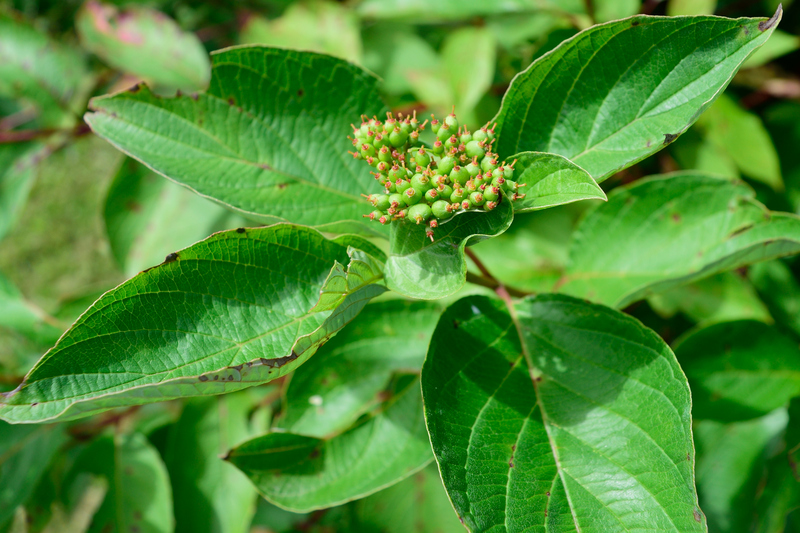Smart Winter Protection Hacks for Garden Plants
Posted on 06/06/2025
Smart Winter Protection Hacks for Garden Plants
As the days grow colder and frost starts to creep in, gardeners naturally worry about the survival of their beloved plants. Winter poses unique challenges, but with the right knowledge and innovative approaches, you can ensure your garden remains vibrant and healthy through the toughest months. This comprehensive guide explores a variety of smart winter protection hacks for garden plants to help you safeguard your green haven and prepare for a flourishing spring.
Understanding The Winter Hazards for Garden Plants
Before delving into the best winter protection strategies, it's essential to recognize the threats your plants face during the colder months. Cold stress, freezing temperatures, frost, snow, dehydration, and wildlife damage can all threaten your garden's well-being.
- Frost and Freezing: Harsh drops in temperature can rupture plant cells, causing foliage and stems to die back.
- Windburn: Winter winds can rapidly dehydrate plants, especially evergreens, leading to brown and desiccated foliage.
- Fluctuating Temperatures: Thaw-freeze cycles trigger early growth or cracks in stems, damaging the plant.
- Heavy Snow & Ice: Accumulated weight can break branches and flatten delicate plants.
- Wildlife: Hungry rabbits, deer, and rodents may feast on bark, stems, and bulbs.

Planning Ahead: The Foundation of Smart Winter Plant Protection
The most effective winter plant protection starts long before the first snowfall. Consider these essential pre-winter hacks to boost your plants' resilience:
- Select Hardy Species: Opt for varieties suited to your USDA zone; these will naturally withstand regional conditions better.
- Right Plant, Right Place: Plant less hardy species in sheltered microclimates, such as near south-facing walls or under large evergreen trees.
- Soil Preparation: Enrich soil with organic matter to improve drainage--wet roots are especially vulnerable to cold damage.
- Water Well Before Freeze: Ensure soil is moist before the ground freezes; hydrated plants are less prone to winter desiccation.
Top Smart Hacks for Protecting Outdoor Garden Plants in Winter
1. Mulch Mastery: Nature's Insulation Blanket
Mulching is one of the simplest yet most powerful winter protection tips for garden plants. A generous layer of mulch acts like a thermal blanket, stabilizing soil temperatures, reducing moisture loss, and preventing freeze-thaw cycles that can heave roots out of the ground.
- Apply a 3- to 6-inch layer of straw, shredded leaves, bark, or pine needles after the first hard frost (to prevent rodents from nesting early).
- Keep mulch several inches from the base of trunks to avoid excess moisture and rot.
- For extra cold regions, try double mulching: layer compost first, then cover with straw for added protection.
2. Cloak Your Plants: Row Covers, Cloths, and Cloches
Physical barriers are excellent for shielding delicate shrubs, roses, and perennials. There's a range of smart options:
- Floating Row Covers: Lightweight sheets of fabric can be draped and secured over rows of vegetables and flowers to guard against frost.
- Burlap Wraps: Wrap burlap around shrubs and small trees, especially evergreens and roses, to soften cold winds and prevent sunscald.
- Plastic Tunnels or Domes (Cloches): Use recycled clear bottles, glass jars, or purpose-made covers to shield tender annuals and seedlings.
Bonus hack: Use stakes to build a frame around valuable plants, then drape with cloths or blankets during especially cold nights.
3. Create Windbreaks for Added Shelter
Persistent winds can severely dehydrate plants and contribute to "winter burn." To minimize wind exposure:
- Install temporary snow fences or burlap wind barriers on the windward side of your garden.
- Plant evergreen hedges or use lattice panels as living windbreaks.
- Strategically arrange potted plants near a wall or fence for instant wind protection.
4. Watering Wisdom: Don't Neglect Moisture
It sounds counterintuitive, but keeping your plants hydrated before the deep freeze sets in is essential for winter survival. Even in cold weather, desiccating winds and dry air can sap moisture from roots and needles.
- Saturate the soil around trees, shrubs, and perennials before the ground freezes hard--especially important for evergreens.
- Water on mild winter days if the top few inches of soil are dry and the ground is not frozen.
- Pro Tip: Mulching after watering helps lock in precious moisture.
5. Smart Use of Anti-Desiccant Sprays
Anti-desiccant sprays (or antitranspirants) apply a waxy layer to evergreen foliage, reducing moisture loss. They are especially helpful for:
- Boxwoods, rhododendrons, and other broadleaf evergreens
- Freshly transplanted shrubs
- Plants exposed to winter sun and wind
Spray according to product instructions during a warm, dry spell for best results.
6. Clever Plant Covers from Household Items
No need to break the bank--many everyday items make effective plant protectors in a pinch:
- Old bed sheets, towels, and even newspapers can be draped over tender plants during sudden cold snaps.
- Use cardboard boxes to cover smaller shrubs overnight--just remember to remove them during the day to prevent excess moisture buildup.
- Plastic milk jugs or soda bottles (with bottoms removed) are perfect mini-greenhouses for young plants.
7. Moveable Plant Protection: Bringing Pots Indoors
For those with container gardens, consider these portable plant protection hacks:
- Bring pots of tender annuals, herbs, and houseplants indoors or into a heated garage/shed when temperatures drop below their threshold.
- If moving indoors isn't possible, cluster pots together for warmth and wrap the containers in bubble wrap, burlap, or old blankets for insulation.
- Elevate pots off cold ground with bricks or pot feet to improve drainage and reduce root exposure to freezing surfaces.
8. Pruning Strategies: To Cut or Not to Cut
Resist the temptation to prune heavily in late fall--cutting stimulates tender new growth that's vulnerable to winterkill. Instead:
- Remove only damaged, dead, or diseased wood before winter.
- Wait until late winter/early spring to do major shaping for most plants.
- For roses and hydrangeas, leave more stem length to provide extra protection for buds.
Advanced and Innovative Winter Plant Protection Methods
Insulate With Garden Design
If you're redesigning your garden or adding new beds, think about winter microclimates. Planting on slopes, near stone walls, or beside windbreaks can mean the difference between survival and loss. Raised beds tend to freeze and thaw faster; consider extra mulch or insulation here.
Heat Hacks: Frost Blankets and DIY Heaters
- Purchase reusable horticultural frost blankets or "plant jackets" for vulnerable specimens. These allow light and air through while retaining warmth.
- For high-value plants (like tender fruit trees or tropicals), string a few outdoor-safe LED holiday lights beneath a row cover to gently raise temperatures on frigid nights.
- Use hot-water bottles or jugs filled with warm water under covers to radiate extra overnight warmth when severe cold threatens.
Encourage Snow as an Insulator
- Where snow is reliable, let a layer accumulate over border beds as it naturally insulates plants and roots from the coldest air.
- If heavy snow threatens to break shrubs, gently brush the snow off with a broom after each storm.
Protecting Trees and Shrubs from Wildlife Damage
- Wrap trunks of young trees with tree guards or hardware cloth to prevent rodent and rabbit girdling.
- Install chicken wire cages around prized shrubs to deter deer nibbling.
- Spread a ring of sharp gravel at the base of plants to discourage digging critters.
Care Tips for Specific Garden Plant Types in Winter
How to Protect Perennials in Winter
- Cut back perennials only after the first frost and leave stems a few inches high for insulation and to trap snow.
- Apply mulch generously, focusing on the root zone. Avoid premature mulching to prevent inviting overwintering pests.
- For marginally hardy perennials, cover the planting area with an overturned crate or basket and then heap mulch or leaves on top.
Evergreens Need Special Attention
- Water thoroughly until the ground freezes, especially in dry autumns.
- Spray anti-desiccants and use burlap screens for exposed evergreens.
- Wrap spiral wire or twine around columnar evergreens (like arborvitae) to prevent flaring and breakage from snow.
Winter Care for Roses
- Mound soil or compost 8-12 inches high around the base to protect graft unions; remove in spring.
- Cover with rose cones, burlap, or a double layer of mulch in colder regions.
- Wait until late winter to prune canes back hard.

Frequently Asked Winter Protection Questions
- When should I start protecting garden plants from winter?
Begin applying protective measures after the first killing frost, but before hard freezes set in. This timing prevents inviting pests to nest in mulch or covers. - Is it necessary to water plants in winter?
Yes! If your area experiences dry winters, water during spells of thaw to prevent root desiccation, especially for evergreens and newly planted specimens. - How can I prevent freeze/thaw root heaving?
Maintain a thick, loose mulch layer atop perennials, and avoid disturbing the soil late in fall. This stabilizes temperatures and reduces moisture fluctuations. - Should I remove winter covers during warm spells?
Yes, temporarily remove covers during sunny, warm days to avoid overheating and moisture build-up, then replace them at night or when frost is forecast.
Conclusion: Cultivate a Stress-Free Winter for Your Garden Plants
With a blend of smart planning, creativity, and proven techniques, you can confidently protect garden plants in winter and look forward to lush growth come spring. Remember, it's the small, consistent acts--like applying mulch, using covers, and safeguarding against wind and wildlife--that yield the best results.
Try these winter plant care hacks this season, and enjoy peace of mind knowing you've given your garden the ultimate chance to thrive, no matter how harsh the weather gets!
- Plan ahead, choose plant-smart solutions, and always adapt to your local climate.
For more smart winter protection hacks for garden plants and in-depth guides, be sure to bookmark our site and check back throughout the seasons!

